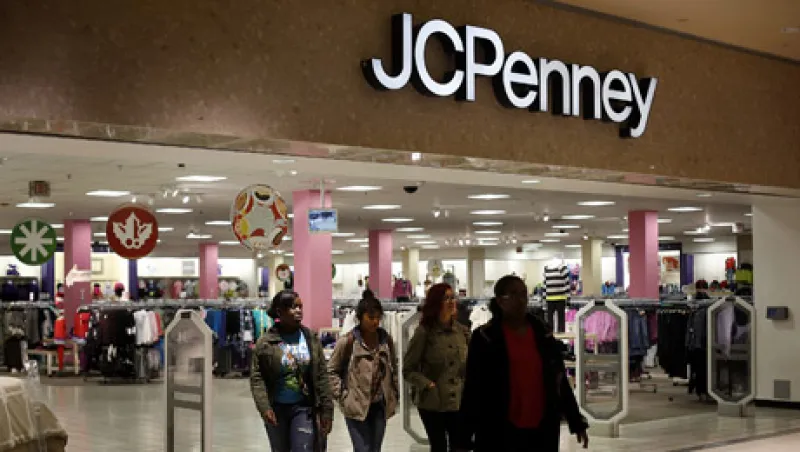ARMED WITH fancy, Nobel Prize–winning equations and Greek terminology such as beta, portable alpha, neutered theta and sigma-squared delta (okay, I made up the last two), an army of consultants evaluates mutual fund and hedge fund manager performance on a monthly and quarterly basis, ignoring the fact that in the short run stock movements are random and require no skill to capture. As investors zero in on the short term, they dump stocks that are expected to do little or have declined. But if you can bear short-term underperformance, long-term opportunity is created — I call it short-term pain arbitrage.
J.C. Penney Co. is a classic short-term pain arbitrage stock. There is a lot of uncertainty about what the retailer’s sales will do in the near future, but in the long run it looks like a very attractive investment.
A little more than a year ago, hedge fund manager William Ackman took a significant position in Penney stock. I don’t know if he had to resort to blackmail, but somehow Ackman pulled off a miracle: He persuaded Ron Johnson — the genius behind the Apple stores — to quit his job in Cupertino and become CEO of run-down Penney.
In the first quarter of 2012, Johnson unveiled a strategy to transform each Penney’s department store into a shopping mall with 100 small, branded shops. Each specialty shop will have a unique feel and be owned and run by Penney, but they’ll all be designed in collaboration with the brand owners (which are footing part of the remodeling expense). Everyone who has seen pictures of the prototype store in Plano, Texas, says it is amazing.
Johnson is also introducing at Penney those little things that made Apple stores so unique: Next to Disney and Carter’s shops, Penney will have Legos and iPad tables for kids waiting for their mommies to shop, while it will provide couches and coffee bars for the impatient husbands. So far, Penney has only introduced ten shops, but it will bring in 30 shops a year over the next three years, and by August 2013, 40 percent of Penney stores will have been redesigned.
U.S. consumers have an insatiable need to feel good about parting with their money. We don’t necessarily know it, but we want to be deceived: We want to buy things on sale; we want to feel like we took advantage of the retailer. The old Penney was the master of this game. It would inflate initial prices, then run sales. In fact, to overcompensate for its unexciting stores, Penney ran 500 promotions a year — 1.4 promotions a day. Serious brands did not want to be a party to this gimmickry, so Penney mostly sold its own, lower-quality brand.
The boldest move Johnson has made is to kill the 1.4-sales-a-day strategy and replace it with an everyday low price. However, promotions are like a drug for consumers and retailers alike, and the withdrawal process is painful. Once Penney stopped running promotions, customer traffic dropped 10 percent and sales 20 percent.
Before Johnson took over, Penney’s sales and earnings had stagnated for years. Sales per square foot were about $150, lower than Kohl’s Corp.’s $194 or Nordstrom’s $431 but still a high number considering how stale and unexciting Penney stores were. Now that figure is closer to $115, but there are definite signs that the new strategy is working, with in-store specialty shop sales running at $186 per square foot, double those in the rest of the store and 30 percent higher than before the stores were redesigned.
However, the current worry is that if total sales continue to fall, the company will run out of cash. It is very likely that Penney will have to offer promotions, but considering that its stores and merchandising are improving, the company won’t have to be nearly as promotional as it was in the past. At the end of 2012, Penney should have about $1 billion in cash on its balance sheet. It has an untapped $1.5 billion credit line that it can use at any time, and it can still monetize its assets. (Penney owns a third of its stores, and the rest are on long-term leases at $4 per square foot, giving it a competitive advantage, as it is paying a fraction of what its competition lays out for real estate.) Last, Penney doesn’t have to worry about the debt market for a long time: Its next debt maturity is $250 million in 2015.
The best thing about Penney is that the bar for success is set very low. Since he took over, Johnson has taken out $900 million in costs. Its sales per square foot should rise with every redesigned store. If Penney achieves the pre-Johnson level of $150 per square foot and gets to keep $700 million of cost cuts, its earnings power will be $3 to $4 per share. If sales per square foot come back to the 2007 peak of $170, earnings will jump to $6 a share. Considering that Penney stock is trading at about $19, if your career can survive neutered theta in the short run, this is one cheap stock for the long run.
Vitaliy Katsenelson (vk@imausa.com) is CIO at Investment Management Associates in Denver and author of The Little Book of Sideways Markets.






